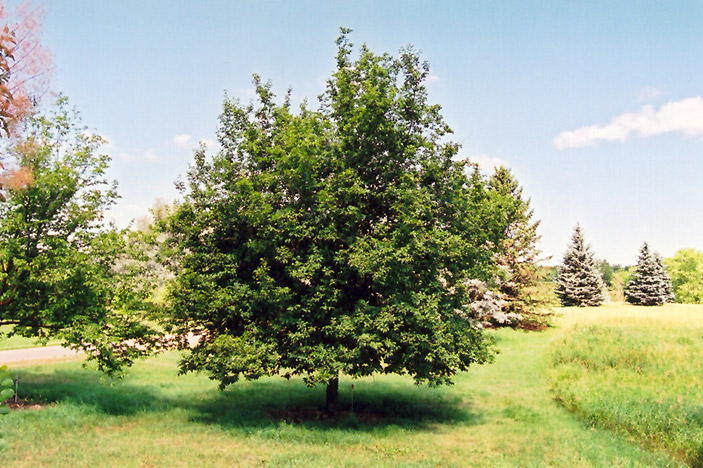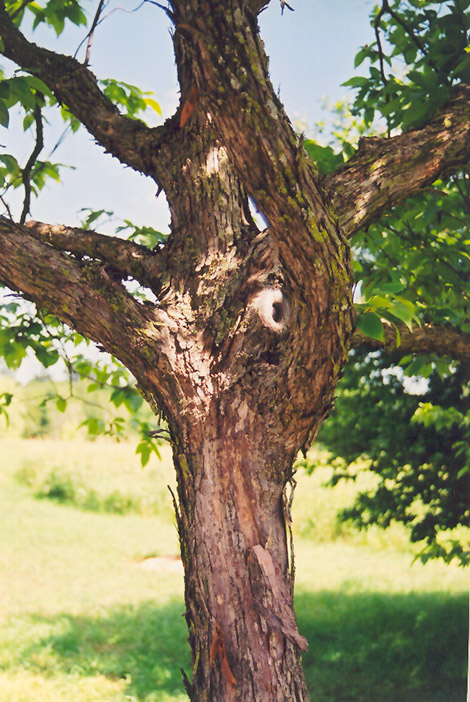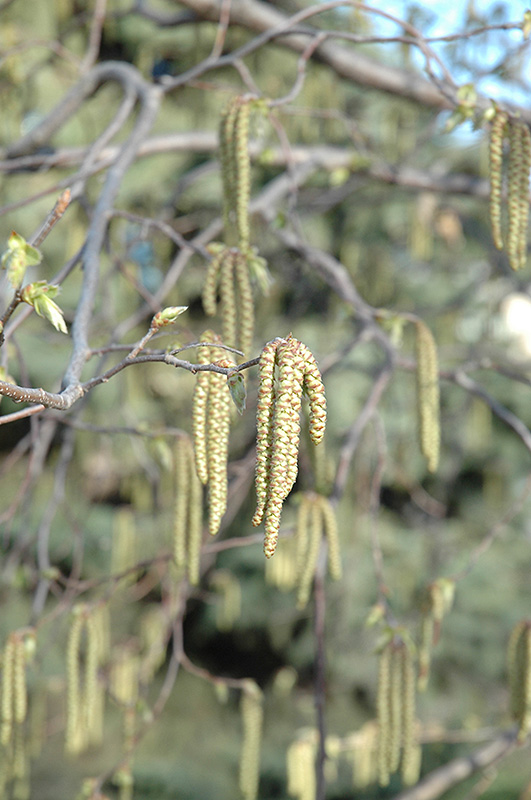Ironwood, American Hornbeam Ostrya virginiana Height: 30 feet Spread: 25 feet
Sunlight:
Hardiness Zone: 3a Other Names: Ironwood Description: An underused small native woodland tree with exceptionally strong wood, tolerates shade very well; interesting hop-like seeds in late summer, layered habit of growth, flaking bark; very low maintenance, but somewhat slow growing Ornamental Features Ironwood, American Hornbeam has dark green deciduous foliage on a tree with a pyramidal habit of growth. The serrated pointy leaves turn lemon yellow in fall. It produces small clusters of tan hop-like fruit from late summer to mid fall. The fruit can be messy if allowed to drop on the lawn or walkways, and may require occasional clean-up. Landscape Attributes Ironwood, American Hornbeam is an open deciduous tree with a distinctive and refined pyramidal form. Its relatively fine texture sets it apart from other landscape plants with less refined foliage. This is a relatively low maintenance tree, and is best pruned in late winter once the threat of extreme cold has passed. It is a good choice for attracting birds to your yard, but is not particularly attractive to deer who tend to leave it alone in favor of tastier treats. It has no significant negative characteristics. Ironwood, American Hornbeam is recommended for the following landscape applications; Planting & Growing Ironwood, American Hornbeam will grow to be about 30 feet tall at maturity, with a spread of 25 feet. It has a high canopy of foliage that sits well above the ground, and should not be planted underneath power lines. As it matures, the lower branches of this tree can be strategically removed to create a high enough canopy to support unobstructed human traffic underneath. It grows at a slow rate, and under ideal conditions can be expected to live for 70 years or more. This tree does best in full sun to partial shade. It prefers to grow in average to moist conditions, and shouldn't be allowed to dry out. This plant should be periodically fertilized throughout the active growing season with a specially-formulated acidic fertilizer. It is not particular as to soil type or pH. It is quite intolerant of urban pollution, therefore inner city or urban streetside plantings are best avoided. This species is native to parts of North America. Special Attributes Ironwood get green catkins blooms in spring. Male flowers are 3/4 to 2 inches long and female flowers are 1/4 to 1/2 inches long with three-lobed bracts. Generally it doesn't produce much of the fruit, the fruit are clusters of small winged nutlets. Ironwood (Ostryx) varieties are not reported as toxic.![]()
![]()
![]()
![]()
![]()
![]()
![]()
![]()
![]()
![]()
![]()



